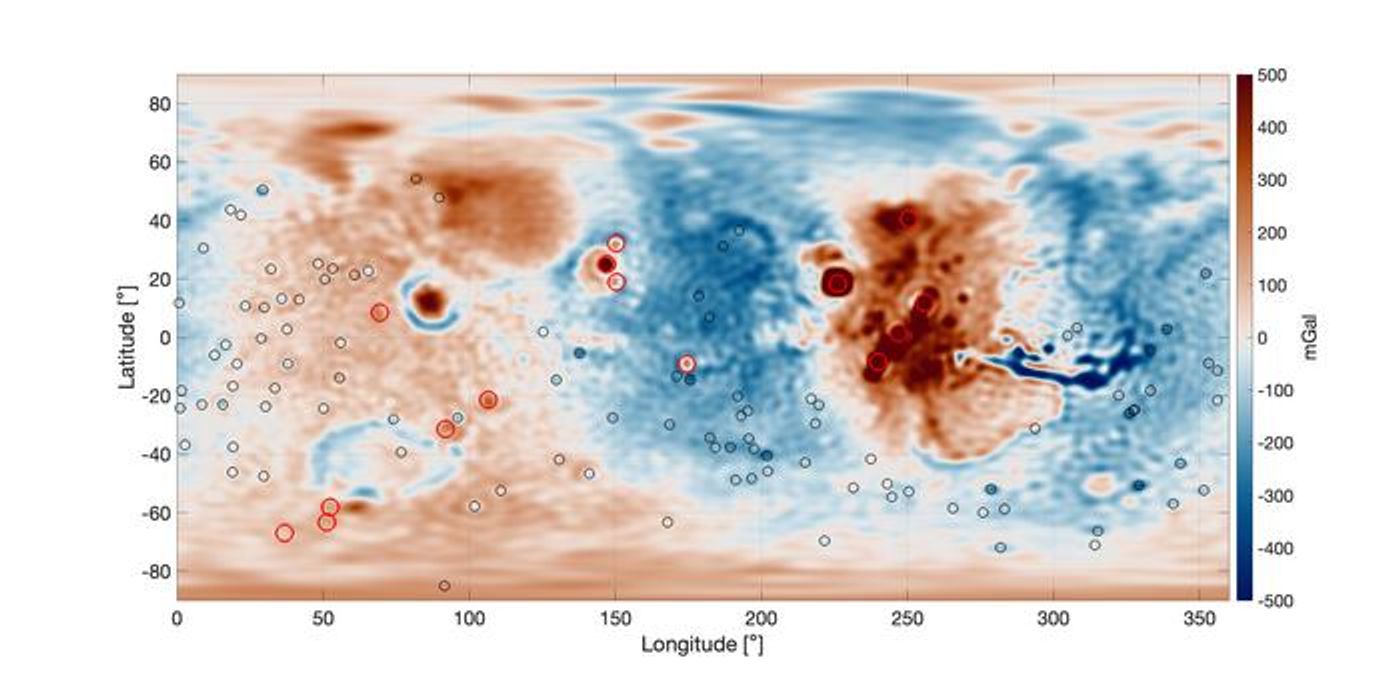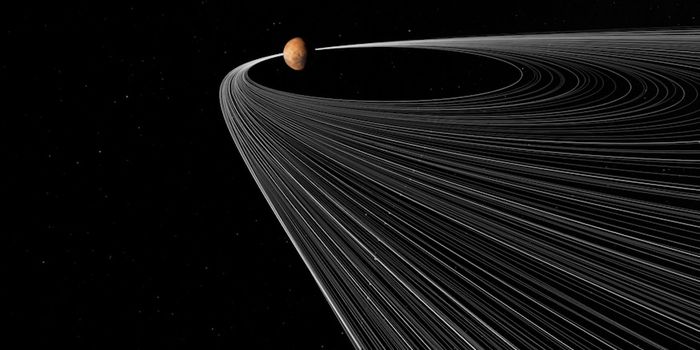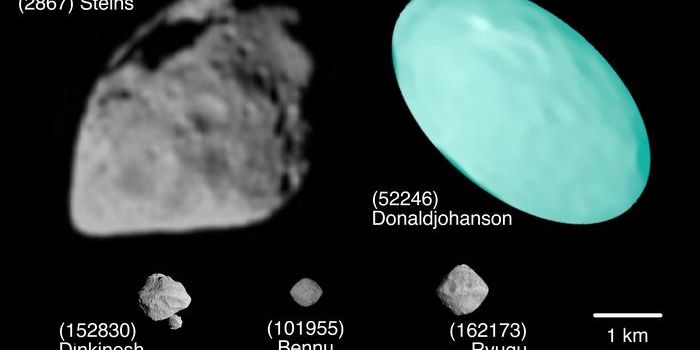Gravity Data Uncovers Ancient Ocean Features and Volcanic Activity on Mars
What did Mars look like billions of years ago? This is what a recent study presented at the Europlanet Science Congress (EPSC) 2024 hopes to address as a team of researchers investigated mysterious structures beneath what is hypothesized to be an ancient ocean, along with Olympus Mons, which is the largest volcano in the solar system. This study holds the potential to help scientists better understand the formation and evolution of the Red Planet and what new techniques can be used to unlock the planet’s secrets.
“These dense structures could be volcanic in origin or could be compacted material due to ancient impacts,” said Dr. Bart Root, who is an assistant professor at TU Delft and lead author of the study. “There are around 20 features of varying sizes that we have identified dotted around the area surrounding the north polar cap – one of which resembles the shape of a dog. There seems to be no trace of them at the surface. However, through gravity data, we have a tantalizing glimpse into the older history of the northern hemisphere of Mars.”
Gravity map of Mars displaying prominent volcanoes (red circles) and impact craters (black circles) with a diameter larger than a few 100 km. Additionally, this displays a gravity high signal located in the volcanic Tharsis Region (red area in the center right of the image), which is surrounded by a ring of negative gravity anomaly (shown in blue). (Credit: Root et al.)
Armed with this gravity data obtained from Mars orbiters, the researchers combined this data with additional data obtained from the now-retired InSight lander into models to produce a global density map of the Red Planet. Through this, the researchers discovered subsurface features in the north polar regions that were 300-400 kg/m3 (19-25 lb/ft3) denser than the surrounding subterrain. Additionally, the researchers gained new insights into why Tharsis Rise, which is a massive volcano field on Mars, is much higher than the surrounding terrain, likely due to a subsurface structure 1,750 kilometers (1,087 miles) in diameter and 1,100 kilometers (684 miles) in height pushing Tharsis Rise upwards.
Going forward, the team hopes to use a future mission known as the Mars Quantum Gravity (MaQuls) mission, which they proposed in a 2023 study, where they intend to use quantum technologies for developing a more accurate gravity map of Mars.
“Observations with MaQuIs would enable us to better explore the subsurface of Mars,” said Dr Lisa Wörner of DLR and who presented on the MaQuIs mission at EPSC2024. “This would help us to find out more about these mysterious hidden features and study ongoing mantle convection, as well as understand dynamic surface processes like atmospheric seasonal changes and the detection of ground water reservoirs.”
What new discoveries about Mars subsurface structures will researchers make in the coming years and decades? Only time will tell, and this is why we science!
As always, keep doing science & keep looking up!
Sources: Europlanet Science Conference 2024, EurekAlert!, Planetary and Space Science, Europlanet Science Conference 2024 (1)









